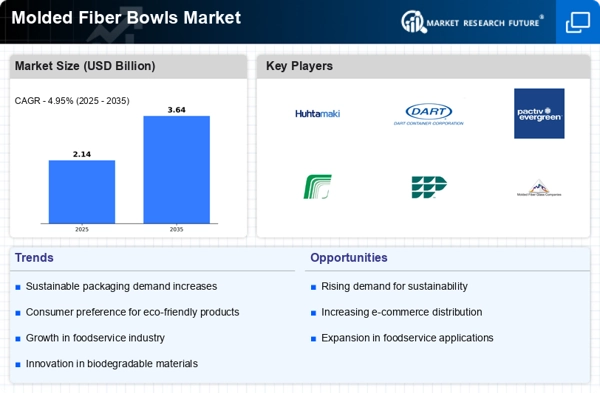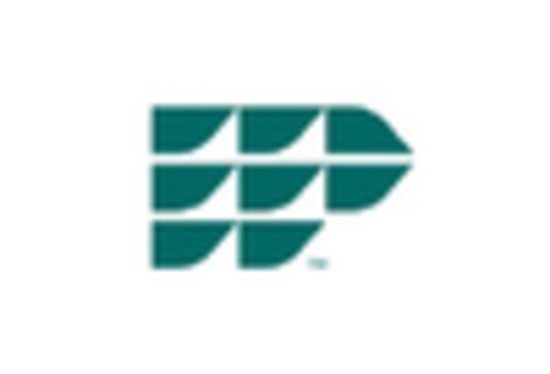Sustainability Initiatives
The Molded Fiber Bowls Market is experiencing a notable shift towards sustainability initiatives. As consumers become increasingly aware of environmental issues, there is a growing demand for eco-friendly packaging solutions. Molded fiber bowls, made from recycled paper and other natural fibers, align with this trend by offering biodegradable and compostable options. This shift is reflected in market data, indicating that the molded fiber packaging segment is projected to grow at a compound annual growth rate of approximately 5.5% over the next five years. Companies are investing in sustainable practices, which not only meet consumer expectations but also comply with stringent regulations aimed at reducing plastic waste. Thus, the emphasis on sustainability is likely to drive the Molded Fiber Bowls Market forward.
Rising Demand in Food Service
The Molded Fiber Bowls Market is witnessing a surge in demand from the food service sector. With the increasing popularity of takeout and delivery services, restaurants and food vendors are seeking sustainable packaging solutions that can withstand various food types. Molded fiber bowls provide an ideal solution, as they are sturdy, leak-resistant, and suitable for both hot and cold foods. Market analysis suggests that the food service industry is expected to account for a significant share of the molded fiber bowls market, driven by the need for environmentally friendly packaging. This trend is further supported by the growing number of food establishments adopting sustainable practices, which enhances the appeal of molded fiber bowls as a preferred choice for food packaging.
Innovative Product Development
Innovation plays a crucial role in the Molded Fiber Bowls Market, as manufacturers continuously seek to enhance product offerings. The introduction of new designs, sizes, and functionalities caters to diverse consumer preferences and market needs. For instance, some companies are developing molded fiber bowls with enhanced durability and moisture resistance, making them suitable for a wider range of applications. This focus on innovation is reflected in market trends, where the demand for customized packaging solutions is on the rise. As businesses strive to differentiate themselves in a competitive landscape, the ability to offer unique molded fiber products could potentially lead to increased market share and customer loyalty.
Regulatory Support for Eco-Friendly Packaging
The Molded Fiber Bowls Market benefits from increasing regulatory support aimed at promoting eco-friendly packaging solutions. Governments across various regions are implementing policies that encourage the use of biodegradable materials and discourage single-use plastics. This regulatory environment creates a favorable landscape for molded fiber bowls, as they comply with these regulations and offer a sustainable alternative. Market data indicates that regions with stringent environmental regulations are likely to see a faster adoption of molded fiber products. Consequently, manufacturers are positioning themselves to capitalize on these regulatory trends, which may enhance their market presence and drive growth in the molded fiber bowls sector.
Consumer Preference for Eco-Conscious Products
Consumer preferences are shifting towards eco-conscious products, significantly impacting the Molded Fiber Bowls Market. As awareness of environmental issues grows, consumers are increasingly seeking products that align with their values. Molded fiber bowls, being biodegradable and made from renewable resources, resonate well with this demographic. Market Research Future indicates that a substantial percentage of consumers are willing to pay a premium for sustainable packaging options. This trend is likely to encourage manufacturers to focus on eco-friendly materials and production processes, thereby expanding their market reach. The alignment of consumer preferences with sustainable practices is expected to drive the growth of the molded fiber bowls market, as businesses adapt to meet these evolving demands.


















Leave a Comment